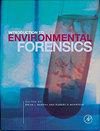废弃重晶石矿区重金属和砷:生物标志物生态风险评估
IF 1.2
4区 环境科学与生态学
Q4 ENVIRONMENTAL SCIENCES
引用次数: 4
摘要
摘要:本研究利用化学和生物技术对罗马尼亚Suceava县Tarnița-Ostra地区的重金属污染源进行了识别。采用电感耦合等离子体发射光谱法(ICP-OES)和原子吸收光谱法(AAS)对无菌垃圾场及其周围土壤样品进行消化分析,测定总金属和砷含量。在该区域发现的高浓度重金属,如铜(3.12克/公斤)、砷(0.68克/公斤)、铅(2.67克/公斤)、锌(0.43克/公斤)和钡(0.54克/公斤),可能通过食物链对环境和公众健康构成高风险。样品中含有大量的Cu、Fe、Pb、Zn和As,大大降低了小麦(Triticum aestivum L.)的萌发率,这是本研究中用作毒性标志的指标。然而,用氢氧化钠溶液处理水提物去除重金属后,发芽参数恢复正常。ICP-OES对尾矿库重金属水平进行定量分析,可以更好地了解尾矿库的潜在生态风险和污染状况。相反,小麦发芽试验可以是可靠和廉价的生物方法来证明重金属和砷对植物的有害影响。本文章由计算机程序翻译,如有差异,请以英文原文为准。
Heavy metals and arsenic in an abandoned barite mining area: ecological risk assessment using biomarkers
Abstract This study identifies a source of heavy metal pollution in the Tarnița-Ostra area, Suceava County, Romania, using both chemical and biological techniques. Samples collected from the sterile dumps and the surrounding soil were digested and analyzed for total metals and arsenic by inductively coupled plasma-optical emission spectroscopy (ICP-OES) and atomic absorption spectrometry (AAS). High concentrations of heavy metals, such as copper (3.12 g/kg), arsenic (0.68 g/kg), lead (2.67 g/kg), zinc (0.43 g/kg) and barium (0.54 g/kg), found in that region, may pose a high risk to the environment and public health through the food chain. The large amounts of Cu, Fe, Pb, Zn and As of the collected samples diminished much the germination of wheat (Triticum aestivum L.), used in this study as a marker of toxicity. However, after the removal of the heavy metals by treating the aqueous extracts with sodium hydroxide solutions, the germination parameters returned to normal. The quantification of heavy metal levels by ICP-OES provides a better understanding of the potential ecological risks and contamination status of the tailings dumps. Instead, wheat germination tests can be reliable and inexpensive biological methods to prove the harmful effect of heavy metals and arsenic on plants.
求助全文
通过发布文献求助,成功后即可免费获取论文全文。
去求助
来源期刊

Environmental Forensics
环境科学-环境科学
CiteScore
4.90
自引率
5.60%
发文量
23
审稿时长
3 months
期刊介绍:
Environmental Forensics provides a forum for scientific investigations that address environment contamination, its sources, and the historical reconstruction of its release into the environment. The context for investigations that form the published papers in the journal are often subjects to regulatory or legal proceedings, public scrutiny, and debate. In all contexts, rigorous scientific underpinnings guide the subject investigations.
Specifically, the journal is an international, quarterly, peer-reviewed publication offering scientific studies that explore or are relevant to the source, age, fate, transport, as well as human health and ecological effects of environmental contamination. Journal subject matter encompasses all aspects of contamination mentioned above within the environmental media of air, water, soil, sediments and biota. Data evaluation and analysis approaches are highlighted as well including multivariate statistical methods. Journal focus is on scientific and technical information, data, and critical analysis in the following areas:
-Contaminant Fingerprinting for source identification and/or age-dating, including (but not limited to) chemical, isotopic, chiral, mineralogical/microscopy techniques, DNA and tree-ring fingerprinting
-Specific Evaluative Techniques for source identification and/or age-dating including (but not limited to) historical document and aerial photography review, signature chemicals, atmospheric tracers and markets forensics, background concentration evaluations.
-Statistical Evaluation, Contaminant Modeling and Data Visualization
-Vapor Intrusion including delineating the source and background values of indoor air contamination
-Integrated Case Studies, employing environmental fate techniques
-Legal Considerations, including strategic considerations for environmental fate in litigation and arbitration, and regulatory statutes and actions
 求助内容:
求助内容: 应助结果提醒方式:
应助结果提醒方式:


